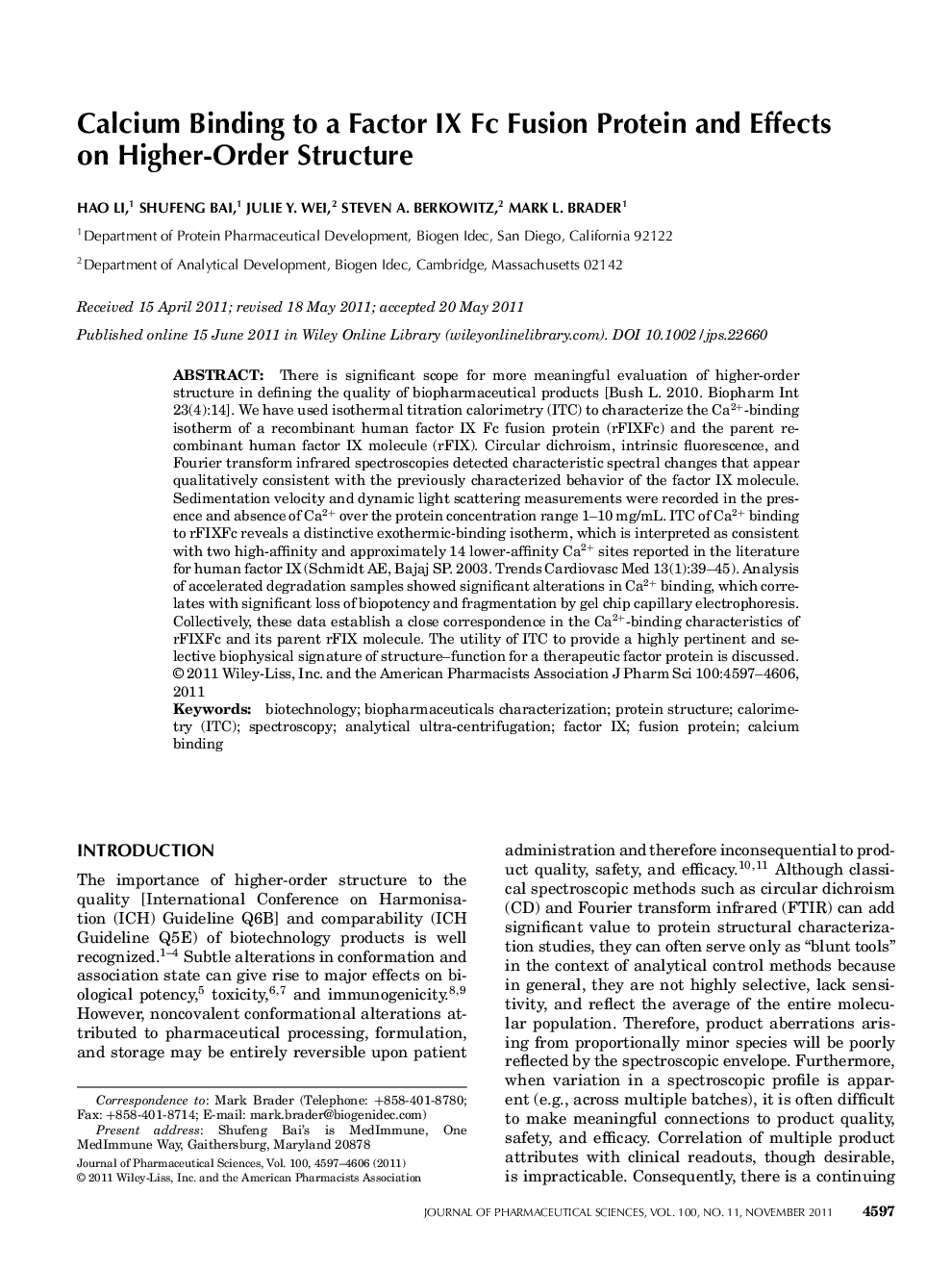| Article ID | Journal | Published Year | Pages | File Type |
|---|---|---|---|---|
| 2486161 | Journal of Pharmaceutical Sciences | 2011 | 10 Pages |
Abstract
There is significant scope for more meaningful evaluation of higherâorder structure in defining the quality of biopharmaceutical products [Bush L. 2010. Biopharm Int 23(4):14]. We have used isothermal titration calorimetry (ITC) to characterize the Ca2+âbinding isotherm of a recombinant human factor IX Fc fusion protein (rFIXFc) and the parent recombinant human factor IX molecule (rFIX). Circular dichroism, intrinsic fluorescence, and Fourier transform infrared spectroscopies detected characteristic spectral changes that appear qualitatively consistent with the previously characterized behavior of the factor IX molecule. Sedimentation velocity and dynamic light scattering measurements were recorded in the presence and absence of Ca2+ over the protein concentration range 1-10Â mg/mL. ITC of Ca2+ binding to rFIXFc reveals a distinctive exothermicâbinding isotherm, which is interpreted as consistent with two highâaffinity and approximately 14 lowerâaffinity Ca2+ sites reported in the literature for human factor IX (Schmidt AE, Bajaj SP. 2003. Trends Cardiovasc Med 13(1):39-45). Analysis of accelerated degradation samples showed significant alterations in Ca2+ binding, which correlates with significant loss of biopotency and fragmentation by gel chip capillary electrophoresis. Collectively, these data establish a close correspondence in the Ca2+âbinding characteristics of rFIXFc and its parent rFIX molecule. The utility of ITC to provide a highly pertinent and selective biophysical signature of structure-function for a therapeutic factor protein is discussed. © 2011 WileyâLiss, Inc. and the American Pharmacists Association J Pharm Sci 100:4597-4606, 2011
Keywords
Related Topics
Health Sciences
Pharmacology, Toxicology and Pharmaceutical Science
Drug Discovery
Authors
Hao Li, Shufeng Bai, Julie Y. Wei, Steven A. Berkowitz, Mark L. Brader,
